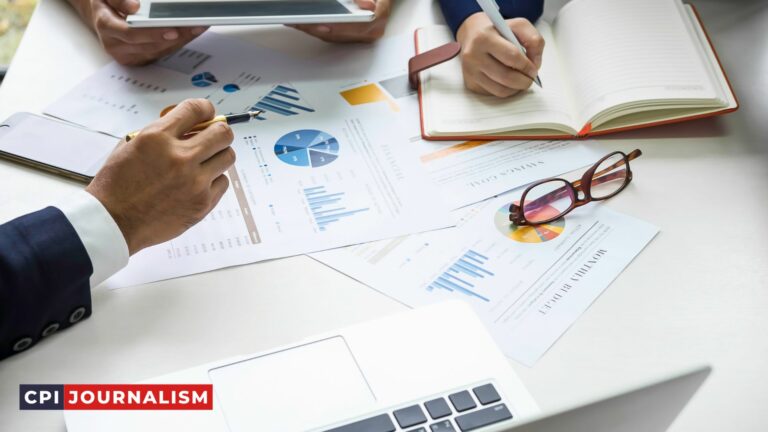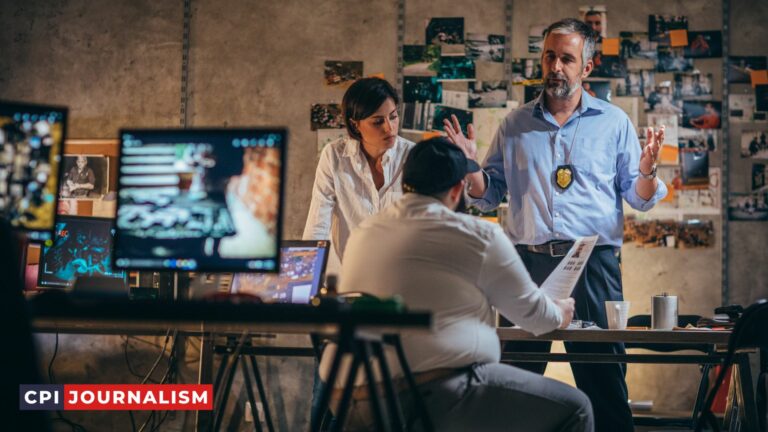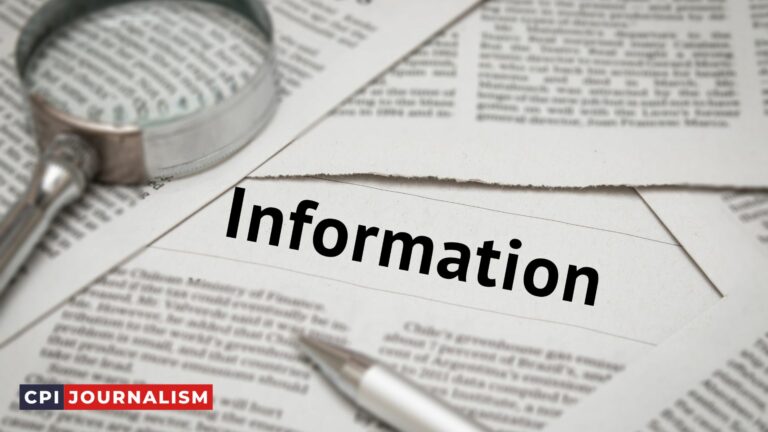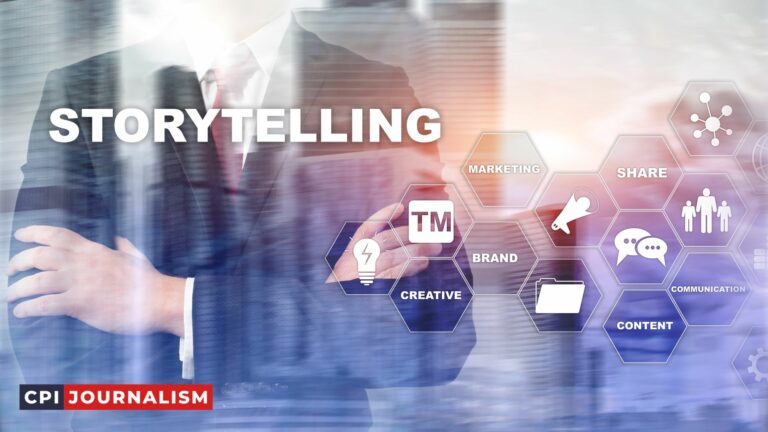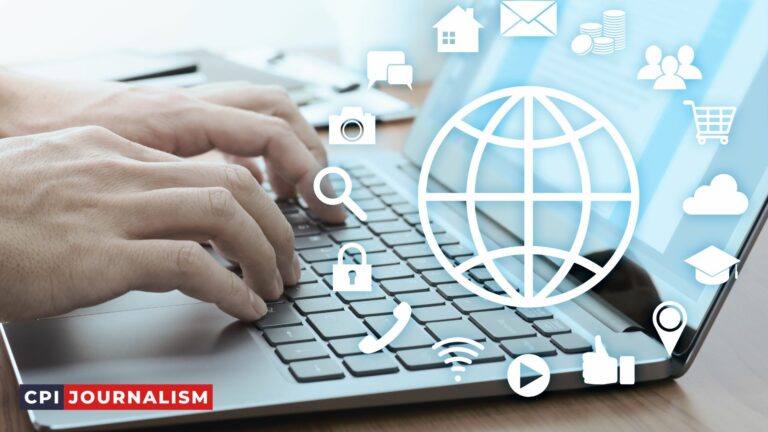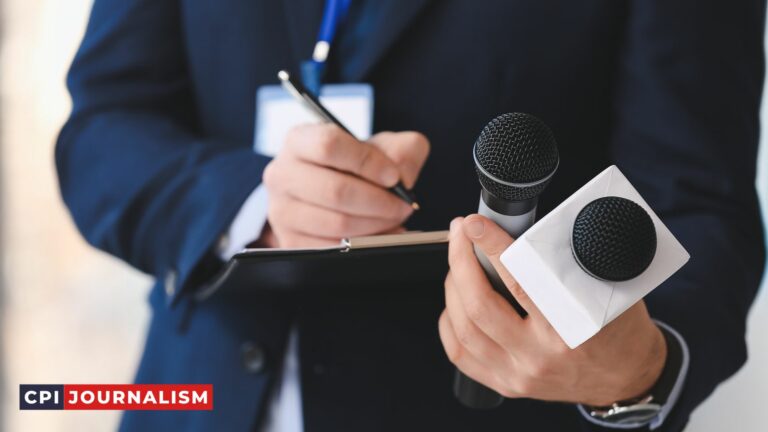What Role Do Multimedia And Visual Elements Play In Investigative Journalism?
As an experienced journalist, I have seen firsthand the power of multimedia and visual elements in investigative journalism.
From providing additional context and background to investigations, to enhancing stories with striking visuals, multimedia and visual elements can be powerful tools for investigative journalists.
In this article, I will explore the role multimedia and visual elements play in investigative journalism, and how they can be used to enrich stories and uncover important truths.
A. Definition Of Multimedia And Visual Elements
Multimedia and visual elements are essential tools for investigative journalists, allowing them to communicate complex information and ideas in an engaging and accessible way. Multimedia refers to any combination of text, audio, video, images, and animation.
Visual elements, on the other hand, refer to any type of visual representation, such as charts and diagrams, used to explain a concept or tell a story.
When used strategically, multimedia and visual elements can be powerful tools for investigative journalism. Multimedia allows journalists to present multiple perspectives and create a more immersive experience for their audience.
Visual elements can help to explain complex topics in an easier to digest format, while also providing a visual representation of facts and figures.
When creating multimedia and visual elements for investigative journalism, it is important to consider the audience and the goal of the story.
Visual elements should only be used when necessary, and should always be used in a way that directly supports the story. Additionally, it is important to ensure that all multimedia and visual elements are accurate, balanced, and appropriate for the audience.
B. Overview of the Role of Multimedia and Visual Elements in Investigative Journalism
Investigative journalism is a type of journalism in which reporters and journalists dig deep into a particular subject to uncover significant facts and details that are often hidden or not readily available.
This type of journalism requires reporters to exercise their creativity and intuition to uncover stories that would otherwise remain untold.
As a result, multimedia and visual elements are essential tools for investigative journalists, who use them to narrate their stories, appeal to readers, and convey complex information in a more efficient and engaging way.
Multimedia and visual elements can be used to capture the essence of a story and create more impactful narratives.
For example, in-depth interviews with people who are directly involved in a story can be used to provide an in-depth perspective that traditional text-based journalism cannot.
Additionally, multimedia such as photographs, audio clips, and videos can be used to capture the tone and emotion of a story, which can be difficult to convey through words alone.
Furthermore, visual elements can be used to make complex information easier to understand. Charts, diagrams, and infographics can be used to break down complex topics and data into simpler parts that are easier to digest.
Additionally, visual elements can be used to illustrate the scope and scale of a situation, allowing readers to gain a better understanding of the events and the context in which they are occurring.
Finally, multimedia and visual elements can be used to draw attention to a story and encourage readers to engage with it. By creating compelling visuals and multimedia pieces, journalists can draw attention to their stories and encourage readers to learn more.
Additionally, multimedia and visuals can be used to create more engaging stories, as they allow readers to experience the story more intimately and from a number of different perspectives.
In conclusion, multimedia and visual elements are essential tools for investigative journalists. They provide a way for reporters to capture the essence of a story, present complex information in an intuitive way, and draw attention to the story to encourage readers to engage with it.
As such, journalists should make use of these tools in order to create more powerful and impactful stories.
II. The Role of Multimedia and Visual Elements in Investigative Journalism
The role of multimedia and visual elements in investigative journalism is an essential part of telling a story and communicating a message. Visual elements, such as videos, photos, and graphics, help to provide a more powerful and compelling narrative than words alone.
In investigative journalism, multimedia and visual elements can be used to provide evidence, create a narrative arc, and illustrate the truth of a story in a way that words alone cannot.
When it comes to gathering evidence, multimedia and visual elements are invaluable. Photos and videos can provide direct evidence of a topic or story, and can be used to corroborate the facts of a story.
These elements can also be used to illustrate or show the impact or consequences of certain events. For example, photos of a polluted river can be used to illustrate the effects of industrial pollution.
Multimedia and visual elements can also be used to create a narrative arc, helping to tell a story in a more engaging and powerful way.
Photos, videos, and graphics can be used to bring the reader into the story and make it more vivid and engaging. They can also be used to provide context and help the reader understand the story better.
Finally, multimedia and visual elements can be used to illustrate the truth of a story. They can be used to provide direct evidence of a certain event or situation, or to show the effects of certain actions or decisions.
Photos and videos can also help to provide an emotional connection to a story, which can help to illustrate the truth and importance of the story.
Overall, the role of multimedia and visual elements in investigative journalism is essential to telling a story and communicating a message. These elements can help to provide direct evidence, create a narrative arc, and illustrate the truth of a story in a way that words alone cannot.
A. Enhancing Storytelling
Investigative journalism is a powerful tool for uncovering truth and bringing justice to those who have been wronged. To maximize its impact, however, multimedia and visual elements must be incorporated.
Multimedia and visual elements can help to make complex stories more accessible and interesting to viewers, as well as to draw attention to important aspects of the story. They can also provide an emotional connection between the audience and the story, making it more impactful.
When it comes to enhancing storytelling, the possibilities are truly endless. Journalists can use video clips, photographs, animations, infographics, audio clips, and more to bring their stories to life.
By combining these elements in creative ways, journalists can create compelling narratives that engage viewers and draw attention to the facts of the story.
For example, when reporting on a controversial issue, a journalist could create an infographic that shows the major players and their positions on the issue.
This could help to break down complex information for viewers, as well as to illustrate the various sides of the debate. Or, a journalist could use video clips to humanize the story and to create an emotional connection with viewers.
Overall, incorporating multimedia and visual elements into investigative journalism can help to make stories more accessible and engaging to viewers, while also helping to bring attention to important aspects of the story.
By taking advantage of these tools, journalists can create more powerful stories that have a greater impact.
B. Increasing Engagement
Engagement is an important factor when it comes to investigative journalism. The more engaged a reader is, the more likely they are to remember the story and the messages it conveys. Multimedia and visual elements can help to improve engagement, making the story more memorable and impactful.
One way to increase engagement is to use multimedia elements to supplement the text. For example, a journalist could include videos, audio clips, photographs, infographics, and other visuals to help bring the story to life and make it more engaging. This can also help to convey complex information in a more accessible way.
In addition, interactive elements can be used to engage readers. Interactive elements include polls, quizzes, and interactive graphics that allow readers to explore the story. This encourages readers to engage with the story and become more invested in the topic.
Finally, visual elements can be used to create a more immersive experience. For example, the use of 360-degree videos, virtual reality, and augmented reality can help to bring the story to life and make it more engaging.
Overall, using multimedia and visual elements is an effective way to increase engagement and make an investigative story more memorable and impactful.
C. Providing Context
As an experienced investigative journalist, I can tell you that providing context for your stories is of paramount importance.
This means that you must give your audience a sense of why the story matters and why it’s relevant to them. Multimedia and visual elements can be invaluable tools in helping to provide this context.
For instance, if you are investigating a particular event, you can use multimedia and visual elements to help your audience understand the events leading up to it.
By providing images, audio, and video of the people, places, and events that led to the story, you can give your audience a better understanding of the situation and make your story more compelling.
Multimedia and visual elements can also help to add emotional impact to your story. For example, if you’re investigating a story about the effects of poverty, you can include images of the people suffering from poverty to give your audience a better understanding of the issue.
This can help to bring the story to life and make it more powerful and meaningful.
In short, multimedia and visual elements can be powerful tools for investigative journalism as they can help to provide context and add emotional impact. By using them effectively, you can create a more powerful and compelling story.
D. Enhancing Credibility
Multimedia and visual elements are essential components of investigative journalism, as they can enhance the credibility of a story.
By including images, videos, and other visuals, journalists can provide a more complete and convincing narrative, allowing their audience to better understand the context and implications of the story.
Additionally, multimedia and visual elements can help to humanize stories, which can be especially effective in investigative journalism that involves complex topics or difficult subjects.
When selecting visuals for a story, it is important to consider the source and authenticity of the material. Sticking to visuals that are original or come from trusted sources can help to ensure accuracy and credibility.
Additionally, it is important to consider the impact of the visuals and how they might affect the audience. Any visuals used should be relevant to the story and should not be used for shock value or sensationalism.
Finally, it is important to be mindful of copyright laws when using any visuals. Journalists should always obtain the appropriate permissions to use any visuals that are not in the public domain. Failure to do so can result in legal complications and can undermine the credibility of the story.
III. Examples of Multimedia and Visual Elements Used in Investigative Journalism
Investigative journalism is an essential part of the media landscape, providing the public with valuable, in-depth information on important topics.
Multimedia and visual elements are key tools in the investigative journalist’s arsenal, as they can be used to help convey complex information in an engaging and accessible way.
Let’s take a look at some examples of how multimedia and visual elements can be used in investigative journalism.
One of the most powerful tools available to investigative journalists is the use of video footage. By incorporating footage of interviews, demonstrations, and other key events, journalists can provide a more complete picture of a story and help bring it to life.
Video can also be used to create documentary-style content, allowing journalists to explore complex topics in greater detail.

The use of photography is also a key tool for investigative journalists. By utilizing photos and images, journalists can illustrate their stories in ways that text alone cannot. Photos can also be used to create photo essays, which can be an effective way to tell powerful stories.
Audio can also be used to help investigative journalists tell their stories. Audio clips of interviews, recordings of events, and other audio elements can be used to provide a more complete picture of a story. Audio elements can also be used to create podcasts, which can be an effective way to reach a wider audience.
Data visualizations can also be of great use to investigative journalists. By using charts, graphs, and other visual elements, journalists can help make complex data easier to understand.
Data visualizations can also be used to illustrate relationships between different elements of a story and help provide readers with a better understanding of the information.
These are just a few of the many different ways in which multimedia and visual elements can be used in investigative journalism. By utilizing these tools, journalists can better engage their audience and provide them with a more complete understanding of their stories.
A. Photos
Photos are an invaluable tool for investigative journalists. They can help to tell a story, provide context, and provide visual evidence.
Photos can be used to illustrate a point, to provide a glimpse into a particular situation, or to bring an issue to life for readers. They can also be used to show the human cost of an issue, or to illustrate the effects of a policy or decision.
When selecting photos for investigative journalism, it is important to consider the context in which the photo will be used.
Photos should be chosen carefully to ensure that they are accurate and relevant to the story. Photos should also be chosen with an eye to what emotion or feeling the photo will evoke in the reader.
In addition to carefully selecting photos, it is also important for investigative journalists to ensure that the photos are properly captioned and credited. This is especially important when dealing with sensitive topics, or when using photos taken by other people or organizations.
It also helps to ensure that readers understand the context of the photo and why it is important to the story.
Finally, photos can be used to provide a visual record of an event or situation, or to illustrate the effects of a policy or decision. Photos can be used to tell the story of a person or situation in a way that words alone cannot.
They can also be used to create a visual timeline of an event or to capture a moment in time. In this way, photos can be a powerful tool for investigative journalists.
B. Videos
Videos are an increasingly important part of investigative journalism. Videos can provide an in-depth look at an event or situation that can’t be captured through text or even still photos. It can give the reporter a way to show the true emotions and atmosphere of the situation.
Videos can also help to provide strong evidence to back up the claims made by a journalist. Videos can provide raw footage that can be used to show the truth behind a particular event or situation.
It’s important to remember, however, that video evidence needs to be collected carefully, as it could be manipulated or edited in a way that could be misleading.
Videos can also be used to create a narrative that can help to bring a story to life in a way that text can’t. Through creative editing and visual storytelling, a video can become an effective tool to show the truth behind a story.
Additionally, videos can be used to create powerful and unique visuals that can draw in the audience and keep them engaged.
Finally, videos can be used to increase the reach and impact of a story by being shared on social media or other platforms. Videos can be used to spread the story to a wider audience and help to raise awareness of an issue or situation.
Overall, videos offer a powerful tool for investigative journalists to use when telling a story. It can help to create a powerful narrative, provide evidence for the claims made, and increase the reach and impact of a story.
C. Infographics
Infographics can play an important role in investigative journalism as they are extremely useful in displaying complex data quickly and efficiently.
Infographics can provide a visual representation of data such as statistics, trends, and patterns that can be used to support an investigative journalist’s findings.
By using infographics, investigative journalists can help readers quickly and easily understand the significance of their findings.
Infographics can be used to highlight the main points of an investigation. For example, an infographic can summarize the key findings of an investigation and provide visual cues to draw readers’ attention to the most important points.
This can help readers quickly understand the findings and the implications of the investigation.
In addition, infographics can be used to help readers understand the connections between different pieces of information. For instance, an infographic can be used to visually demonstrate the flow of money from one person or entity to another.
By visually connecting the dots, readers can better understand the context of the investigation and the relationships between the parties involved.
Finally, infographics can be used to draw attention to potential problems or areas of concern. For example, an infographic can be used to display the effects of a certain policy or decision as well as any potential risks associated with it.
By using infographics to illustrate the potential risks, investigative journalists can help readers better understand the implications of the investigation.
Overall, infographics are an invaluable tool for investigative journalists. By using infographics to display complex data, highlight main points, and illustrate potential risks, investigative journalists can help readers better understand and appreciate their findings.
D. Audio
Audio plays an important role in investigative journalism and it can add a powerful dimension to stories. Audio can be used to capture interviews, conversations, and the sounds of a certain place. For example, a journalist may use audio to capture the sound of a factory to illustrate a story about environmental destruction.
Audio recordings can also be used to capture the voices of those affected by a story. This can add a human element to the story that can help to create a more powerful and emotional impact. Audio recordings can also provide sound bites that can be used in a news story to bring the story to life.
When using audio, it’s important to remember that the quality of the audio is very important. Poor quality audio can lead to the listener not being able to understand what is being said.
Investing in good audio equipment and learning the basics of recording can help to ensure that the audio is of the highest quality.
Overall, audio can be a great way to add a new dimension to investigative journalism. It can provide powerful sound bites and help to create a more powerful and emotional impact.
Audio can also be used to capture the voices of those affected by a story and bring the story to life. With the right audio equipment and recording skills, journalists can use audio to great effect in their investigative journalism.
E. Interactive Maps
Interactive maps are increasingly becoming an important tool in investigative journalism, often providing an effective means of visualizing complex stories.
By combining spatial data with interactive elements, journalists can provide readers with an engaging and engaging visual experience that helps them to explore and better understand a story.
For example, interactive maps can be used to show the relationships between different entities involved in a story, such as individuals, organizations, locations and events.
This can be useful for providing a more comprehensive understanding of a story, as well as for highlighting any hidden connections between different elements of the narrative.
Interactive maps can also be used to display trends over time, or to show the spread of an issue across a particular region or country.
In addition to providing an engaging visual experience, interactive maps can also be used to make data-driven stories more effective.

By combining interactive maps with data journalism, journalists can provide readers with an immersive way to explore stories, as well as to visualize the data in a more meaningful way.
This can help to make stories more accessible and engaging, as well as to provide readers with an opportunity to explore and investigate the issue further.
Finally, interactive maps can also be used to create an interactive experience that encourages readers to actively participate in the story.
By providing an opportunity to explore different aspects of the story, readers can gain a more in-depth understanding of the narrative, as well as to gain a more personal connection with the story.
This can help to create a more meaningful experience for readers, and can even lead to greater engagement with the story.
IV. Challenges of Using Multimedia and Visual Elements in Investigative Journalism
Investigative journalism requires a great deal of research, analysis and storytelling. It is a complex process that requires an understanding of the subject matter, the resources available, and the ability to effectively use multimedia and visual elements to bring the story to life.
However, there are a number of challenges that journalists face when using multimedia and visual elements in investigative journalism. These challenges include:
1. Access to Resources: Access to multimedia and visual elements can be limited and expensive. Investigative journalists often have to rely on sources such as stock footage and photography, which can be costly and time consuming to acquire.
Additionally, journalists may have difficulty obtaining access to certain locations or sources of information.
2. Technical Knowledge: Journalists must be familiar with the various software programs and tools in order to effectively utilize multimedia and visual elements in their stories.
This requires a good understanding of the technical aspects of multimedia production, which can be quite challenging for those without experience in this area.
3. Time Constraints: Investigative journalism is a lengthy and often laborious process. Working with multimedia and visual elements can be time consuming and requires a great deal of patience and dedication.
4. Ethical Concerns: Multimedia and visual elements can be used to manipulate the audience and distort the truth. As a result, it is important for journalists to be mindful of ethical considerations when using multimedia and visual elements in investigative journalism.
Despite these challenges, the use of multimedia and visual elements can be an invaluable tool in investigative journalism. By utilizing these elements, journalists can effectively communicate their stories in a more engaging and compelling manner.
A. Cost
When it comes to cost, multimedia and visual elements can be cost-prohibitive for many investigative journalists. However, there are ways of mitigating the costs associated with incorporating multimedia and visual elements into investigative journalism.
One cost-saving measure is to use existing multimedia and visuals from sources such as public domain images and footage. Public sources are invaluable for investigative journalists, as they provide access to a wealth of visuals and multimedia at no cost.
Additionally, some news organizations may have a budget to cover the cost of multimedia and visuals, so journalists should inquire with their news organization to find out if they have a budget for such elements.
In some cases, investigative journalists may be required to invest in additional resources to capture and create multimedia and visuals.
If this is the case, journalists should consider working with a multimedia team. A multimedia team can provide assistance in creating multimedia and visuals, which can help to reduce the cost of production.
Finally, journalists should consider alternative sources of funding for their multimedia and visuals. For example, some news organizations may have a grant program for investigative journalism projects.
Additionally, investigative journalists may be able to seek out crowdfunding to cover some of the costs associated with producing multimedia and visuals.
In summary, multimedia and visual elements can be expensive, but there are ways of mitigating the costs associated with incorporating them into investigative journalism.
Public sources of multimedia and visuals are invaluable, and journalists should consider working with a multimedia team and seeking out alternative sources of funding to cover the cost of producing multimedia and visuals.
B. Accessibility
In order to maximize the impact of multimedia and visual elements in investigative journalism, it is important to ensure that they are accessible to as wide an audience as possible.
This means making use of technologies that make content available to viewers regardless of their physical or digital abilities.
For example, text-to-speech technology can be used to make multimedia content accessible to people with vision or reading impairments, while captioning can be used to make content accessible to people with hearing impairments.
Additionally, alternative text can be used to provide descriptive information for images, ensuring that people with visual impairments can also understand the content.
Additionally, it is important to ensure that content is accessible across different platforms and devices. This means making sure that the multimedia content is optimized for mobile devices, as well as for desktop and laptop computers.
Additionally, content should be optimized for different web browsers, making sure that viewers are able to access the content regardless of their preferred browser.
Furthermore, content should be optimized for search engine indexing, so that viewers can easily find the content on search engines. This includes making use of relevant keywords and metadata, as well as properly structuring content using HTML and other programming languages.
By ensuring that multimedia and visual elements in investigative journalism are accessible to as wide an audience as possible, journalists can ensure that their content reaches the widest possible audience and has the greatest possible impact.
C. Technical Knowledge
Investigative journalism requires a range of technical skills and knowledge in order to effectively report on a story. Multimedia and visual elements can play a key role in the success of an investigation.
It is therefore essential for journalists to have an understanding of the technical knowledge required to work with and effectively utilize these elements.
First, journalists need to have a good understanding of the various multimedia and visual elements available to them. This includes understanding the different types of media, their formats, and the best ways to use them to convey the story effectively.
Journalists should also be familiar with the various software and tools used to create, edit, and manipulate these elements.
Second, journalists should have a good grasp of how to collect, analyze, and synthesize data. This includes the ability to use data sources such as spreadsheets, databases, and other digital sources to gain insights and understandings of the story.
Additionally, journalists should have a basic understanding of how to use data visualization tools to present the findings of their investigation in an effective and visually appealing way.
Finally, journalists need to be familiar with the legal implications of their work. They should understand the ways in which their work may be subject to copyright and privacy laws, as well as the ethical considerations that come with using multimedia and visual elements in their investigations.
By having a solid understanding of the technical knowledge required to work with multimedia and visual elements, journalists can ensure the success of their investigative journalism.
D. Ethical Considerations
Ethical considerations are of paramount importance in investigative journalism. When collecting and reporting information, journalists should always ensure that the facts presented are accurate and that the story is told in an unbiased, balanced way.
This means that any multimedia and visual elements used should be in line with the facts and should not be used to manipulate or mislead the audience.
Journalists should also take into consideration the potential impact of their reporting on those featured in their stories. In their reporting, journalists should strive to protect the dignity of those featured in the story, while still ensuring that the facts are accurately presented.
This means that any multimedia and visual elements used should not be used to sensationalize or exploit individuals.
Finally, it is important for journalists to be aware of copyright laws when using multimedia and visual elements in their reporting. It is essential that any multimedia and visual elements used are properly sourced and credited to the original creators. Failure to do so can lead to legal repercussions.
V. Conclusion
In conclusion, multimedia and visual elements are integral in investigative journalism. They provide a more comprehensive, compelling and engaging narrative that can help a story reach a wider audience.
By leveraging multimedia, journalists can highlight the significance of the facts, present the facts in a compelling manner and make complex topics more accessible to the public.
Moreover, multimedia and visual elements can help to illustrate the story in a way that words alone cannot. With the help of video, for example, a story can be brought to life and can be used to provide a more authentic experience for viewers.
Photos and graphics also help to bring stories to life, providing viewers with visuals to help them make sense of the facts.
Finally, multimedia and visual elements can help to provide context to a story and help to make the facts more relatable and understandable. This can help to bring the story to life and make it more meaningful for viewers, thus making the story more impactful.
Ultimately, multimedia and visual elements are essential tools for investigative journalists. By employing multimedia, journalists can provide a more comprehensive, engaging and impactful narrative that can reach a wider audience.
A. Summary of the Role of Multimedia and Visual Elements in Investigative Journalism
Investigative journalism is a powerful tool to uncover the truth behind a story and to bring much-needed attention to important matters that would otherwise remain hidden.
The use of multimedia and visual elements can be a powerful addition to investigative journalism, as they can help to convey the story more effectively and provide additional insight into the evidence and research.
Multimedia elements such as photos, videos, infographics, and audio clips can be used to effectively illustrate the point of the story and to give viewers a more detailed look into the subject.
They can also offer a more immersive experience for readers, helping to draw them into the story and providing a deeper understanding.
Visual elements such as maps, timelines, and diagrams can also be used to help convey the story in an organized and easily understandable way.
The use of multimedia and visual elements can also be an important tool for investigative journalists to better protect their sources and evidence.
Images, videos, and audio clips can be used to provide evidence without revealing the identity of a source or exposing sensitive information.
Additionally, multimedia elements can be used to help corroborate the story and to provide multiple sources of evidence, which can help to demonstrate its accuracy.
In conclusion, multimedia and visual elements can be a powerful addition to investigative journalism. They can help to convey the story more effectively and provide additional insight into the evidence and research.
Additionally, they can help to protect sources and provide multiple sources of evidence to corroborate the story.
B. Benefits of Using Multimedia and Visual Elements in Investigative Journalism
Investigative journalism is a powerful tool in uncovering the truth and holding those in power accountable. By using multimedia and visual elements in investigative journalism, this power can be amplified significantly.
Here are some of the main benefits of incorporating multimedia and visual elements into investigative reporting:
1. Increased Visibility: Multimedia and visual elements make investigative stories more captivating and engaging. They bring stories to life, making them easier to understand and more captivating, which can help to draw in a larger audience. This can be particularly effective when dealing with complex stories or issues.
2. Improved Comprehension: The addition of multimedia and visual elements can help to clarify complex stories and issues, making them easier to comprehend. With the help of multimedia and visual elements, investigative reporters can more effectively present their findings and evidence to the public.
3. Greater Impact: Multimedia and visual elements can make investigative stories more emotionally engaging and impactful. This can be particularly effective in sensitive stories, as multimedia and visual elements can help to bring the human element into the narrative.
4. More Credibility: The use of multimedia and visual elements can add credibility to investigative stories. They can give viewers a better understanding of the story and provide them with a more immersive experience. This can help to build trust in the reporting and ensure that the story is taken seriously.
In conclusion, using multimedia and visual elements in investigative journalism can help to amplify the power of the story and ensure that it reaches a wider audience.
It can also help to clarify complex stories and issues, while making them more emotionally engaging and impactful. Ultimately, incorporating multimedia and visual elements into investigative reporting can help to ensure that the story has the greatest possible impact.
C. Recommendations for Future Use of Multimedia and Visual Elements in Investigative Journalism
As an experienced journalist, I believe that multimedia and visual elements are essential for successful investigative journalism. These elements, when used thoughtfully and strategically, can enhance the impact of an investigative story and help to convey the story’s importance to a wider audience.
Therefore, I offer the following recommendations for the use of multimedia and visual elements in future investigative journalism:
1. Utilize a Variety of Multimedia Platforms: To effectively reach and engage a wider audience, it is important to utilize a variety of multimedia platforms. This includes using social media, websites, and other digital mediums, in addition to more traditional print media.
2. Make Use of Visual Elements: Visual elements, such as photographs, videos, and other graphics, can be used to bring an investigative story to life and make it more memorable.
Be sure to use visuals that are relevant to the story and make sure that they are used in a way that is ethical and respectful.
3. Leverage the Power of Data: Data can be used to illustrate facts and provide evidence to support an investigative story. Be sure to use data that is accurate and up to date.
4. Utilize Interactive Elements: Interactive elements, such as polls, quizzes, and other interactive content, can be used to engage a wider audience and make an investigative story more interesting and memorable.
5. Tell the Story from Multiple Perspectives: When telling an investigative story, be sure to include multiple perspectives. This could include interviews with multiple sources, as well as perspectives from experts and other stakeholders.
6. Encourage Collaboration: Collaboration between journalists, editors, and other members of the media can help to ensure that an investigative story is accurate and effective. Encourage collaboration and ensure that everyone involved is working together towards the same goal.
By following these recommendations, upcoming journalists can ensure that their investigative journalism is engaging, impactful, and successful.


